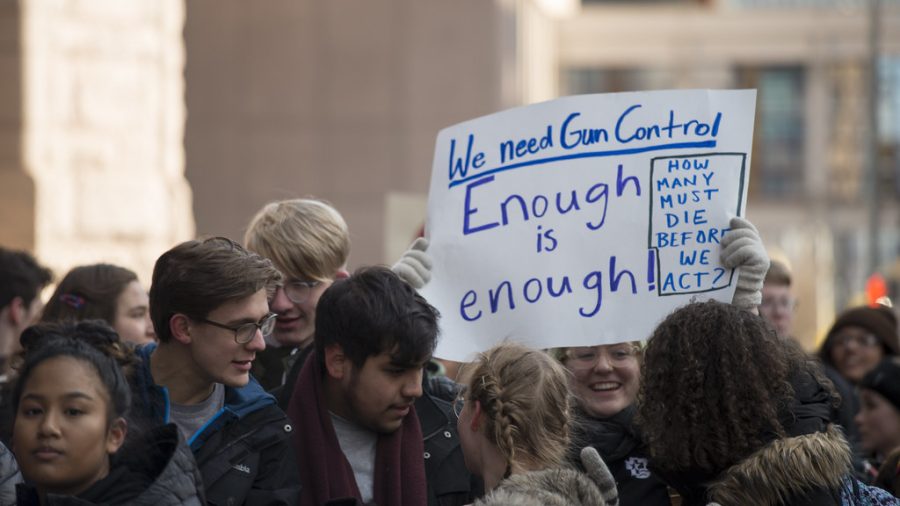Opinion: Is our current school shooting response outdated?
With school shootings and gun control discussions still prevalent, what is the best response in the event of an emergency?
*Trigger warning- discussions of violence and shootings.*
“School is the last place where students should have to worry about gun violence,” says Everytown, an American non-profit organization that advocates for gun control. However, according to Everytown, there have been an average of 49 school shootings a year since 2013, with that number quadrupling in the 2021-2022 school year.
Gun violence in schools is an epidemic. Students shouldn’t have to go to class scared, but many do. After talking with students at the school, it’s clear that participating in drills and hearing about school shootings on the news has caused some children to develop fear, anxiety, and even feelings of PTSD. While a shooting is unlikely, schools still attempt to prepare their students for an active shooter situation.
The Department of Homeland Security provides a description of an active shooter as “an individual actively engaged in killing or attempting to kill people in a confined and populated area; in most cases, active shooters use firearms and there is no pattern or method to their selection of victims.”
“Active shooter situations are unpredictable and evolve quickly,” as reported by Homeland Security. “Before law enforcement arrives on the scene, individuals must be prepared both mentally and physically to deal with an active shooter situation.”
Preparation is given in the form of drills. Students are very familiar with the active shooter response in our school, as they’ve been practicing it their whole lives. The procedure is: lock the door, cover the window, turn the lights off, and sit out of view. Students are instructed to remain in the classroom.
There’s another response that’s taught and used in many universities and businesses, called the Run, Hide, Fight response. The steps are, as follows:
Run from an active threat if there’s a considerable distance between you and the shooter. Move to a secure place, take others with you, and call 911 when it’s safe to do so.
Hide if escape isn’t possible. Block doors, avoid windows, and silence phones. Turn off the lights and shut the blinds. Stay out of the shooter’s view.
Fight as a last resort, if your life is in danger. Attempt to incapacitate or disarm the shooter. Act with physical aggression. Use items in your area, such as a fire extinguisher or a chair.
According to the FBI, the Run, Hide, Fight method is the best practice in crisis response. Going over it and implementing it in our school could ensure student safety in the event of a shooting.
The experience of a bomb threat last year showed that many in Potomac Falls felt they were unprepared for a crisis. The response felt chaotic and disorderly, and left many students feeling uncertain about how another threat would be received.
While the Run, Hide, Fight is an effective response to an active shooter, it’s in no way a long term solution to deal with the issue. School should be a safe space for students, and preventing gun violence should be a priority in local and national governments.
Policies can be passed to ensure gun safety, such as extreme risk laws, which can stop a dangerous individual from having access to fire alarms. Required background checks can also ensure that guns are handled safely.
However, the most effective way to end gun violence is stopping it at the source. According to the FBI, many active shooters have a connection to the targeted school. Nurturing a safe climate and providing mental health resources can prevent a later tragedy.
There’s a lot that can be done to end gun violence. Switching to an active shooter response that includes evacuation, such as the Run, Hide, Fight response, could save lives in the event of an emergency. Most importantly, anyone can vote for an official who will stand for gun control. Gun violence in schools can end.


